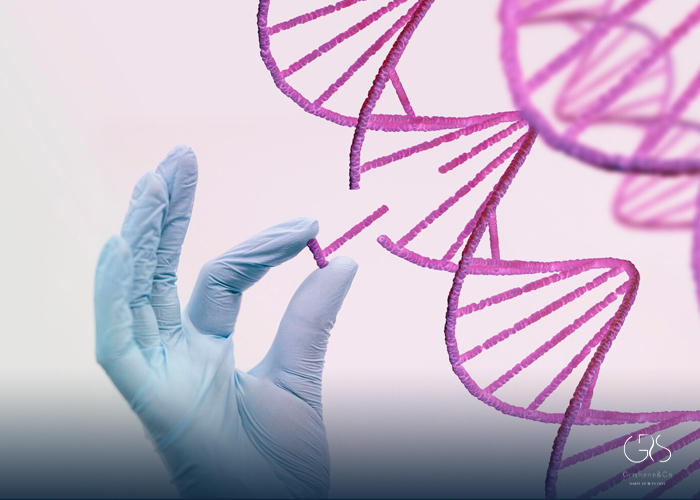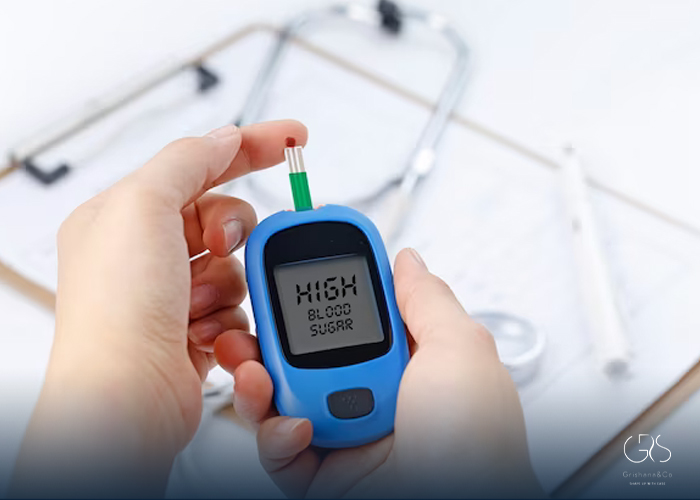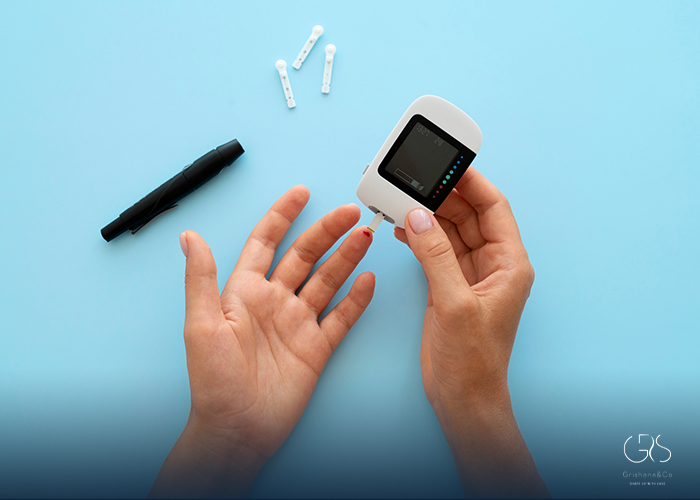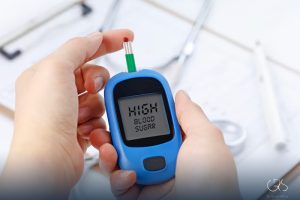Type 2 diabetes is a chronic metabolic disorder characterized by high levels of blood sugar (glucose). It is one of the most prevalent lifestyle diseases affecting millions of people worldwide. Understanding the causes, symptoms, and treatment options for type 2 diabetes is crucial for its management and prevention. In this comprehensive article, we delve into the various aspects of type 2 diabetes, providing essential information and diverse perspectives on this prevalent health condition.
What is Type 2 Diabetes?
Type 2 diabetes, also known as non-insulin-dependent diabetes mellitus, is a chronic condition that affects the way the body metabolizes glucose. In this form of diabetes, the body either resists the effects of insulin, a hormone that regulates blood sugar levels, or doesn’t produce enough insulin to maintain normal blood sugar levels.
Type 2 diabetes accounts for approximately 90% to 95% of all diagnosed cases of diabetes, making it the most common form of the disease. It typically develops in adults, but increasingly affects younger individuals due to rising obesity rates.
Causes of Type 2 Diabetes
Type 2 diabetes is complex, with multiple factors contributing to its development. The main causes include genetic predisposition, lifestyle factors, and other underlying health conditions.
Genetic Factors
Family history plays a significant role in the development of type 2 diabetes. If you have a close relative, such as a parent or sibling, with the condition, your risk is higher. Several genes have been identified as potential contributors to the development of type 2 diabetes, but the genetic mechanisms are still not fully understood.
Lifestyle Factors
Unhealthy lifestyle choices can significantly increase the risk of developing type 2 diabetes. Obesity, especially excess weight around the waist, is a significant risk factor. Lack of physical activity, poor diet high in processed foods, and excessive consumption of sugary beverages contribute to the development of insulin resistance, a hallmark of type 2 diabetes.

Other Risk Factors of type 2 diabetes
Certain populations are more susceptible to type 2 diabetes. Ethnicity, age, gestational diabetes during pregnancy, polycystic ovary syndrome, and other medical conditions, such as high blood pressure and abnormal cholesterol levels, increase the risk.
Symptoms of Type 2 Diabetes
Type 2 diabetes often develops gradually, and the symptoms may not be apparent at the initial stages. However, recognizing the signs is crucial for early detection and management. Common symptoms of type 2 diabetes include:
- Increased thirst and frequent urination
- Fatigue and low energy levels
- Blurred vision
- Slow healing of wounds
- Tingling or numbness in the hands and feet
- Unexplained weight loss or weight gain
- Frequent infections, such as urinary tract or skin infections
It is important to note that some individuals with type 2 diabetes may exhibit no symptoms at all. Additionally, symptoms can vary from person to person, and certain individuals may experience more severe symptoms than others.
Diagnosis and Screening
Diagnosing type 2 diabetes involves various tests and examinations. If your healthcare provider suspects type 2 diabetes, they may recommend the following:
- Hemoglobin A1C test: Measures your average blood sugar levels over the past two to three months.
- Fasting plasma glucose test: Measures blood sugar levels after fasting for at least eight hours.
- Oral glucose tolerance test: Measures blood sugar levels after fasting and again two hours after consuming a glucose-rich drink.
- Random blood sugar test: Measures blood sugar levels at any time of the day, regardless of fasting.
Early detection and regular screenings are crucial for the prevention and proper management of type 2 diabetes.
Treatment Options
The management of type 2 diabetes aims to control blood sugar levels and prevent complications. Treatment typically involves lifestyle changes, medication, and, in some cases, insulin therapy.
Lifestyle Changes
A cornerstone of type 2 diabetes management is adopting a healthy lifestyle. This includes:
- Balanced diet: Focus on consuming a variety of nutrient-dense foods, including whole grains, lean proteins, fruits, vegetables, and healthy fats. Limit the intake of processed foods, sugary snacks, and beverages.
- Regular exercise: Engage in physical activity most days of the week, aiming for at least 150 minutes of moderate aerobic exercise or 75 minutes of vigorous exercise per week. Additionally, incorporate strength training exercises to improve muscle strength.
- Weight management: Achieve and maintain a healthy weight through a combination of healthy eating and regular physical activity.
Medication Options
In some cases, lifestyle changes may not be sufficient, and medication may be prescribed to manage type 2 diabetes. Commonly used medications include:
- Metformin: Helps lower blood sugar levels by reducing glucose production in the liver and increasing insulin sensitivity.
- Sulfonylureas: Stimulate the pancreas to release more insulin.
- Thiazolidinediones: Help insulin work more effectively in muscle and fat tissues.
- GLP-1 receptor agonists: Increase insulin production, decrease glucose production, and slow down digestion.
- DPP-4 inhibitors: Help lower blood sugar levels by preventing the breakdown of incretin hormones.

Complementary and Alternative Therapies
Some individuals may opt for complementary and alternative therapies to support traditional diabetes management. These can include acupuncture, herbal remedies, and supplements. It is important to consult with healthcare professionals before incorporating these therapies to ensure they are safe and effective.
Managing Type 2 Diabetes
Effectively managing type 2 diabetes involves a holistic approach that encompasses self-care practices, regular monitoring of blood sugar levels, and utilizing available support networks and resources.
Self-Care Practices
Self-care plays a vital role in diabetes management. This includes:
- Regularly monitoring blood sugar levels
- Adhering to prescribed medications and treatment plans
- Managing stress through relaxation techniques, mindfulness, or counseling
- Quitting smoking and moderating alcohol consumption
- Getting regular check-ups with healthcare providers
- Taking care of your mental and emotional well-being
Monitoring Blood Sugar Levels
Monitoring blood sugar levels is essential to ensure they remain within the target range. It provides valuable information for self-management and helps identify trends or patterns that may require adjustment in treatment plans.

Support Networks and Resources
Living with type 2 diabetes can be challenging, but there are numerous support networks and resources available. These can include diabetes education programs, online communities, support groups, and counseling services. Connecting with others who have similar experiences can provide emotional support and valuable insights into managing the condition.
Prevention and Risk Reduction
While certain risk factors for type 2 diabetes, such as family history and ethnicity, are beyond our control, there are ways to reduce the risk or delay its onset.
Preventative Measures for type 2 diabetes
Adopting a healthy lifestyle can significantly reduce the risk of developing type 2 diabetes. This includes maintaining a healthy weight, engaging in regular physical activity, and following a balanced diet.
Risk Reduction Strategies
For individuals at high risk of developing type 2 diabetes, specific risk reduction strategies may be recommended. These can include:
- Participating in diabetes prevention programs that focus on lifestyle changes and education.
- Taking medications, such as metformin, to reduce the risk of developing diabetes.
- Regularly screening for diabetes and monitoring blood sugar levels.
Conclusion
Type 2 diabetes is a prevalent condition affecting millions of people worldwide. By understanding its causes, symptoms, and treatment options, individuals can effectively manage the condition and reduce the risk of complications. A comprehensive approach that includes lifestyle changes, medication, regular monitoring, and utilizing available support networks is vital. By adopting a healthy lifestyle and taking proactive steps towards diabetes management, individuals can lead healthier and more fulfilling lives.
Sources
- Mayo Clinic, Type 2 Diabetes
- CDC, Type 2 Diabetes
- WebMD, Type 2 Diabetes: Symptoms, Causes, Treatment
- Cleveland Clinic, Type 2 Diabetes: What It Is, Causes, Symptoms & Treatment
- NIDDK, Type 2 Diabetes - NIDDK
- American Diabetes Association (ADA), Living with Type 2 Diabetes
- CDC, Prevent Type 2 Diabetes





